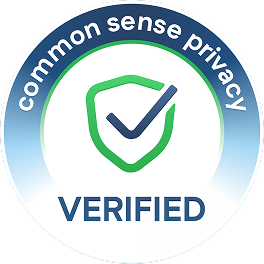Take a look inside 9 images
IXL
Pros: Helps students gain confidence and clearly tracks progress; teachers get immediate stats on students' trouble spots; extensive teacher support.
Cons: Drilling limits opportunities for kids to apply skills in real-world ways; questions include too-frequent repetition; point deductions for incorrect answers can be punitive.
Bottom Line: Students can improve targeted skills by using practice modules in moderation.
Teachers can use IXL to create quizzes in many subject areas (math, language arts, science, etc.). After subject and grade are selected, IXL autopopulates the categories that students are likely studying based on state standards and makes recommendations for pre-created questions.
IXL's biggest strength is the insight it provides teachers, about individual students and their class as a whole. It does this with in-depth item analysis, student usage data, and trouble spot identification, which allows parents and teachers to get the specific information they need to differentiate instruction. The dashboard gives teachers a real-time snapshot of their class and individual students: how many are currently active and where students might be having challenges. Scheduled diagnostic tests can also give further insights about how students are performing throughout the year. Real-time student diagnostic data provides teachers with a personalized Recommendations Wall for each student, listing future skills to practice.
IXL is a great tool to practice and reinforce topics. For math, it would work well as one of several stations that include manipulatives, group whiteboard practice, and other applied methods. For all subjects, particularly social studies, be sure to add in any missing topics or context specific to your classroom instruction. You can also assign specific practice for home -- just be sure to keep it relatively short to avoid burnout. In addition, while most work on IXL is done independently by students, the Group Jam feature allows teachers to work with a group of students on a specific topic together.
IXL is a website (with app versions for Chrome, iOS, and Android) with thousands of math, language, social studies, science, and Spanish practice questions and modules that meet nearly all the Common Core State Standards (CCSS) for K–12 and some of the Next Generation Science Standards (NGSS) for grades 2–8. You'll find games, lessons, videos, and examples covering the fundamentals through subject-specific high school lessons.
Math lessons cover pre-K to 12th grade and include questions such as comparing fractions using real recipes, classifying a system of equations, and graphing two equations by dragging points. Language arts practice -- again, pre-K to 12th grade -- focuses on grammar and vocabulary skills. Science and social studies each cover second through eighth grade topics. Spanish learners can complete Level 1 of the language.
Students practice one skill at a time and earn points and ribbons when they get questions correct. Once they reach 100 points for a skill, kids earn a stamp in their book, encouraging them to master other skills to earn virtual prizes. Questions within a section are often very repetitive, but students looking for variety can jump around from topic to topic under the Recommendations section. Audio support, handwriting recognition, and Spanish-language content make the content accessible to more students.
IXL focuses mostly on drill practice of facts across a variety of subjects (math, science, social science, language arts, and Spanish), but it also contains loads of instructional videos, explanations, and worked through examples. The site also uses adaptive technology to change the difficulty level of questions provided to students as they progress.
The targeted activities in IXL -- pretty much drill-and-practice in format and approach -- can provide extensive opportunities for independent practice. Unlike many sites where students do drills, though, IXL gives feedback on how to get better. Incorrect answers are explained thoroughly with written explanations and examples.
While the points, awards, and rewards do help with motivation, it's unlikely you'll have students clamoring to use IXL, and the point system can be punitive when students get an answer wrong. However, IXL's breadth of content and targeted practice cover a lot of ground and help teachers differentiate more effectively.


















